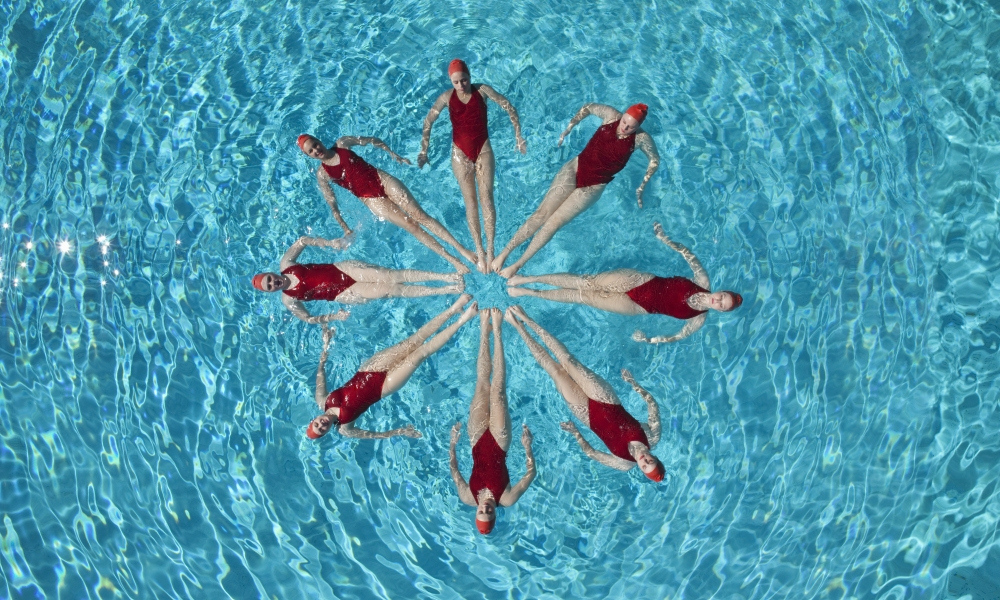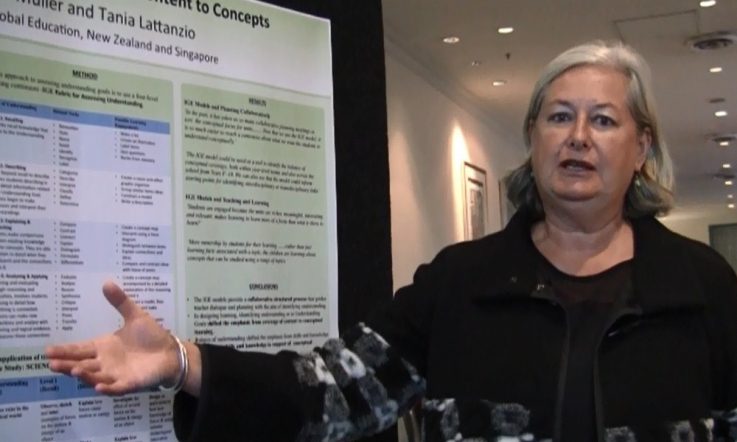In an effort to understand how students learn, researchers from the University of Queensland and the University of Melbourne have collaborated across disciplines of education, psychology and neuroscience to explain the role of synchrony in collaborative learning.
Research shows that working together is beneficial for learning outcomes and experience. When people work together and co-create knowledge, they learn better. This idea isn't new, but we're discovering new evidence to support why and how working together is so productive.
Social synchrony
Working effectively with others means having a shared goal when working together on a task. The energy or ‘vibe' produced is tangible, allowing us to ‘feel what others feel' through sharing thoughts, feelings and behaviours. We call this cognitive, affective and behavioural connection social synchrony.
The research shows that social synchrony helps us to understand, connect and communicate with others (Miles et al., 2010; Wheatley, 2012). In fact, it can be seen in behaviours, such as through the imitation of body language or physical energy, but also at emotional, physiological and neurological levels (Wheatley, 2012).
Several studies have shown that social synchrony supports collaborative learning by improving group affect, cooperation, trust, engagement and cognitive risk-taking.
It also reduces the load on working memory and social cognition, allowing us the ‘cognitive space' to focus on the task at hand (Wheatley et al., 2012).
This sense of connection can be spontaneous – when we feel like we just ‘click' with someone – but it can also be engineered (Miles, et al, 2010; Van Bavel et al., 2010; Wheatley et al., 2012).
This means that teachers can play an important role in promoting positive social collaborative environments in their classrooms that support enhanced social and learning outcomes for students.
Team engagement in higher education
Collaboration is also thought to promote better learning outcomes in higher education and has become further popularised by the drive to incorporate graduate attributes in university courses.
Research in team engagement has shown that team members experience shared vigour, dedication and absorption in collaborative work. Emergent states are cognitive, motivational, and emotional states that are shared between team members (Costa, Passos, and Bakker, 2014). This shows that team engagement is not simply the sum of individual engagement of team members.
Performance outcomes, satisfaction with the work and team, and the viability of the team being successful in future tasks, are all improved when teams experience these shared states.
Potential benefits for higher education are three-fold. First, teams can realise better learning outcomes in their learning tasks. Second, students have positive team work experiences resulting in individual wellbeing, and increased self- and team-efficacy. Third, students learn valuable team skills that are highly valued as graduate attributes.
Physiological synchrony
Everything you think and feel changes the connections in your brain. When we work together, there are multiple brains reacting to a task simultaneously.
Obviously, it is not practical to bring an fMRI machine into the classroom to measure learning. Other measures, such as electrodermal activity (EDA), can be used as a proxy for brain activity.
EDA is the biological mechanism that gives you sweaty palms when you're nervous. It also changes when you're excited or attentive. Measuring EDA in the classroom tells us what is most exciting and engaging for students.
Research conducted in a Year 6 class shows that when students are all focused on a common stimuli, such as explicit instruction, they show simultaneous changes in EDA. This is marked as a physiological ‘connection' between students.
There are fewer class-wide connections when students are working in small groups, but this doesn't mean less collaboration. Students drive cooperative discourse, which leads to asynchrony between groups as each completes the activity in a unique way.
An individual student's physiological synchrony links to their reported confidence, test anxiety and intrinsic motivation. Future research will help teachers optimise social learning environments.
Science of Learning Research
We have seen that synchrony, as manifested in social synchrony, team engagement and physiological synchrony, plays a role in understanding the benefits of collaboration for learning and teaching.
The research above also shows how education research, organisational psychology and biological measurements can work together to give a rich picture of success in the classroom.
Teachers who wish to improve their classrooms can call on this rich interdisciplinary collaborative research to better understand learning and teaching. The best way to learn about learning is to work together!
Reflect – What can you do to capitalise on synchrony in your classroom?
- When was the last time you worked with a colleague to solve a common problem?
- When planning classes, teachers should frequently use well-constructed collaborative group tasks that capitalise on the benefits of social connection between their students. What strategies do you use to scaffold effective collaboration or promote synchrony or collective engagement in shared tasks and activities in your classroom?
- Capitalising on synchrony in teaching and learning means considering ways this may inform your work as a team or faculty leader and as a learner yourself. Consider how the structure of staff meetings and professional development sessions promote social synchrony and engagement amongst staff. How could this be enhanced?
- Have you ever participated in research? Teachers can work with researchers in this field to co-produce new findings that enhance student outcomes and experience.
References:
Costa, P. L., Passos, A. M. & Bakker, A. B. (2014). Team work engagement: A model of emergence. Journal of Occupational and Organizational Psychology, 87, 414–436.
Farmer, T.W., Dawes, M., Alexander, Q. and Brooks, D.S. (2016) 'Challenges associated with applications and interventions: correlated constraints, shadows of synchrony, and teacher/ institutional factors that impact social change.' In Wentzel, K.R. & Ramani, G.B. (Eds.). Handbook of Social influences in School Contexts: Social-Emotional, Motivation, and Cognitive Outcomes.' New York: Routledge
Gillies, R.M., Carroll, A, Cunnington, R, Rafter, M, Palghat, K, Bednark, J, Bourgeois, A (2016). ‘Multimodal representations during an inquiry problem-solving activity in a Year 6 science class: A case study investigating cooperation, physiological arousal and belief states.' Australian Journal of Education. 60(2), 111-127
Miles, L.K., Nind, L.K., Henderson, Z. & Macrae, C.N. (2010). 'Moving memories: behavioural synchrony and memory for self and others.' Journal of Experimental Social Psychology, 46, 457-460.
Rabinowitch, T-C. & Knafo-Noam, A. (2015). 'Synchronous rhythmic interaction enhances children's perceived similarity and closeness towards each other.' PLoS ONE 10(4),
Valdesolo, P, Ouyang, J., & DeSteno, D. (2010). The rhythm of joint action: Synchrony promotes cooperative ability.' Journal of Experimental Social Psychology, 46, 693-695.
Van Bavel, J.J., Hackel, L.M., & Xiao, Y.J. (2014). The Group Mind: The pervasive influence of social identity on cognition.' In Decety, J. & Christen, Y. (Eds.). New Frontiers in Social Neuroscience, Research and Perspectives in Neurosciences 21, 41-56, Springer International Publishing Switzerland
Wheatley, T., Kang, O., Parkinson, C. & Looser, C.E. (2012). From mind perception to mental connection: synchrony as a mechanism for social understanding.' Social and Personality Psychology Compass, 6(8), 589-606.
Consider the reflections above – how could you embed these ideas into your teaching practice?
Have you got any other ideas on how you could capitalise on synchrony in your classroom?



